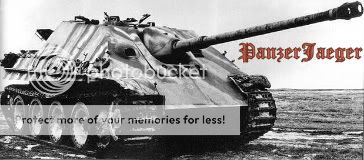You could also say that the Blitz was a Mongol strategy modernised. The point is, the Germans were the first and best at applying combined arms in both the Blitz form and the Kampfgruppe form in a modern war situation. No modern military had that kind of doctrine until the Germans developed it.PzJg, the Kampfgrupp is no more than a reorganisation of different routed units in one fighting bigger unit, combining Luftwaffe unit, different infantry units (SS, Wermarcht) and Kriegmarine and to make it as a fighting unit. It is the Corps d’Armee from Napoleon, modernised. What was really surprising is the speed the Germans succeeded to do it.
Modern warfare really hasnt progressed much further than what the Germans took it to in a tactical sense. That says a lot.
The allies studied and basically copied the German way of war. Look at how both the Russia and the American armies were set up at the begining of the war, and then observe how closely their setups resembled the German one towards the end of the war. Many people take for granted the concepts of direct air support, independent mechanized forces, and elastic defenses - but many of the most basic concepts of modern warfare that are studied today were completely foreign to the allies before they were introduced by the Germans.I don’t agree with your analyse about the use of the Blitzkrieg concept by the allies. They allies didn’t plan to cut the German and surrounding them. It happened but it is another concept, it is the concept of the battles of opportunity (developed by the Red Army). Falaise could be a good example of it. You react to the situation and play on the enemy mistakes.
Of course each nation used their advantages - russians being numbers and americans being air power - to put their own spin on the same basic principles.
But it was the ability of the Germans to quickly throw together a functioning fighting force out of many weak ones that made that victory possible.Market Garden was a success because paratroopers can’t defeat Armoured Division. I tried to explain this many times to friends (paratroopers) but they never get the point. A tank goes faster, had bigger weapons, etc… So Market Garden is an example of how not to use paratroopers and airborne divisions, unless you provide them adequate support.
The planners of Market Garden never intended for the paratroopers to defeat an armored force. They made the false assumption that the attack would confound the Germans long enough for the British armor to relieve the paratroops.
The kampfgruppe doctrine, learned in Russia, allowed the German command to react to the situation much faster than the Allies anticipated.
I was refering to two different examples of that strategy employed, sorry for the confusion.Question: Are you sure it was Manstein in command and not Model? For what I know Manstein was dismissed in March 1944
Manstein used it amazingly in Russia, especially in the retaking of Karkov, and it was also used well in the Market Garden operation.
It is difficult to study the tactics of the Western allies because there were very few times when they were on somewhat equal terms with the Germans. Most of the time they simply used their vastly greater numbers to overwhelm the Germans with no particular strategies. However, I believe Patton studied the German tactics, especially Rommel's campaigns, very carefully. I can see many similarities between the tactics he employed and those of the Germans.And if you study Patton tactic, you will see he was as much flexible as his german counterparts.









 Reply With Quote
Reply With Quote
Bookmarks